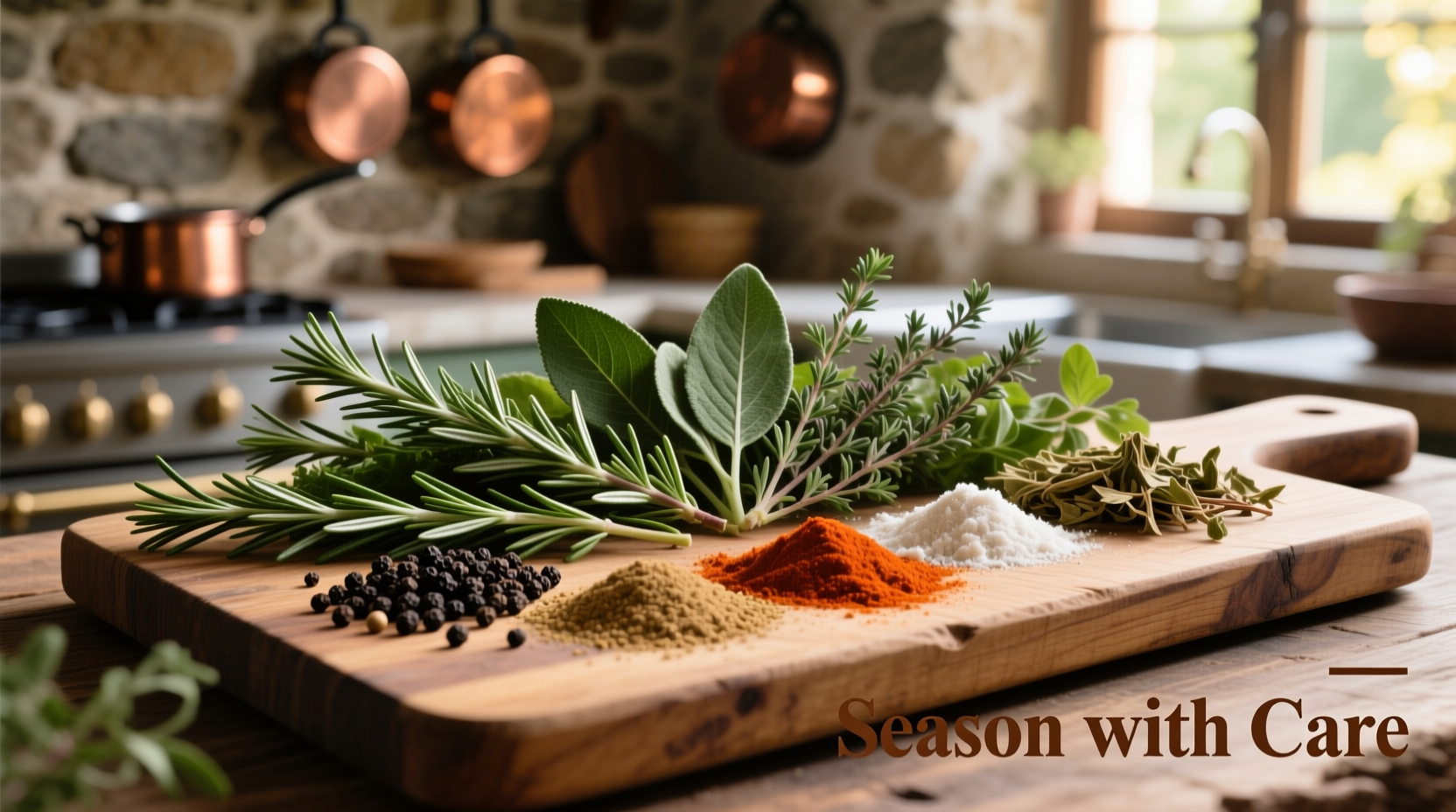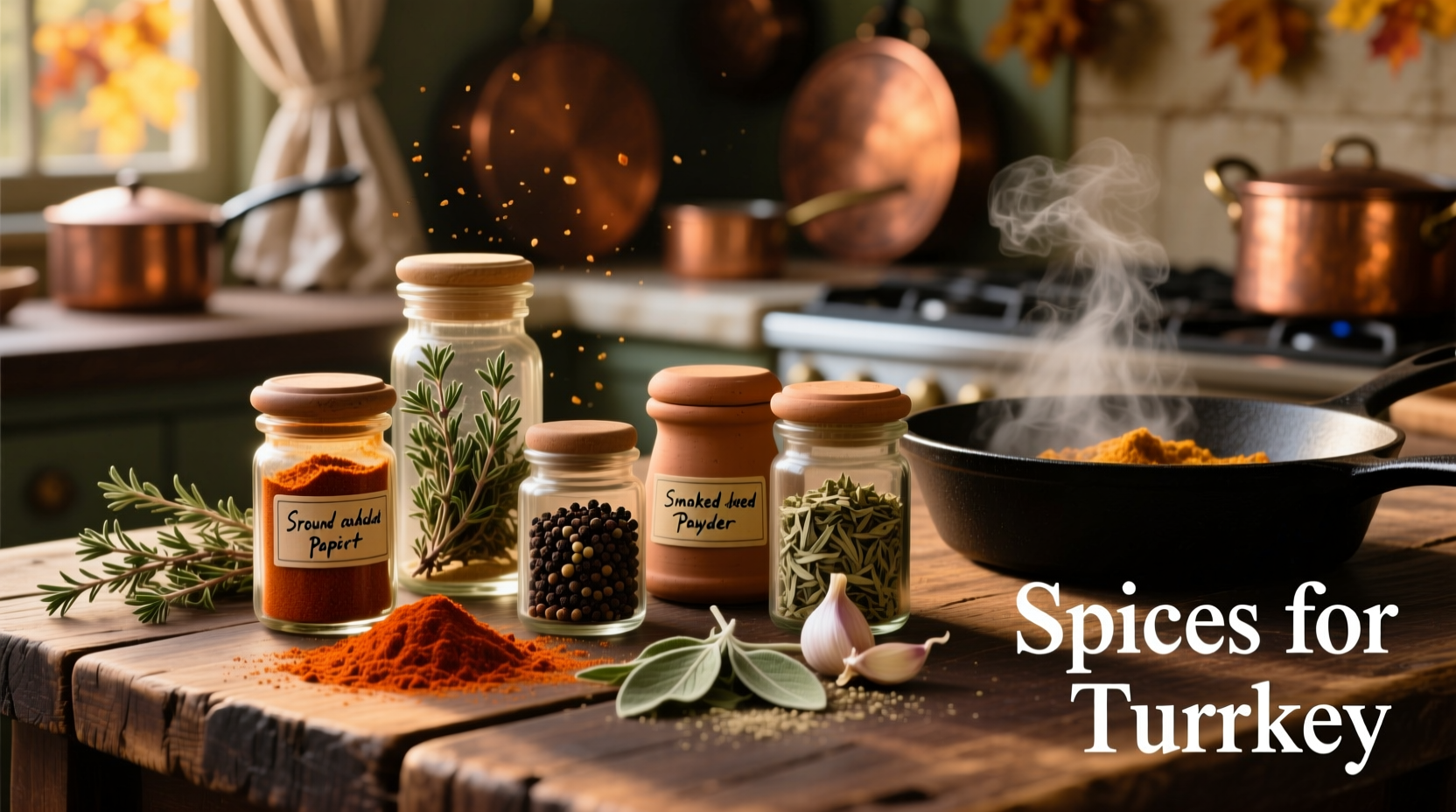 When preparing turkey, understanding which spices complement its mild flavor profile makes the difference between ordinary and extraordinary results. Turkey's subtle taste serves as a perfect canvas for spices, but choosing the right combinations and application methods ensures maximum flavor penetration without overwhelming the meat.
When preparing turkey, understanding which spices complement its mild flavor profile makes the difference between ordinary and extraordinary results. Turkey's subtle taste serves as a perfect canvas for spices, but choosing the right combinations and application methods ensures maximum flavor penetration without overwhelming the meat.
Why Certain Spices Work Best with Turkey
Turkey has a relatively neutral flavor compared to other meats, making it exceptionally receptive to spice absorption. According to culinary research from the Culinary Institute of America, poultry proteins respond particularly well to earthy herbs and warm spices that enhance rather than mask their natural taste. The USDA's Food Safety and Inspection Service confirms that proper seasoning not only improves flavor but also helps create a flavorful crust that seals in moisture during cooking.
Essential Spice Categories for Perfectly Seasoned Turkey
Successful turkey seasoning falls into three primary categories that work together to create balanced flavor:
Foundational Herbs (Earthiness and Depth)
- Sage - The quintessential turkey herb with earthy, slightly peppery notes
- Thyme - Adds subtle lemon undertones that complement poultry
- Marjoram - Similar to oregano but sweeter, ideal for holiday turkeys
Flavor Enhancers (Complexity and Balance)
- Garlic powder - Provides savory depth without burning
- Onion powder - Adds natural sweetness when caramelized
- Paprika - Contributes color and mild sweetness (use smoked paprika for grilled turkey)
Finishing Touches (Brightness and Contrast)
- Lemon or orange zest - Cuts through richness with citrus notes
- Black pepper - Essential for balancing other flavors
- Nutmeg - A tiny amount enhances overall flavor complexity
Spice Blend Comparison: Finding Your Perfect Match
| Blend Type | Best For | Key Spices | Flavor Profile | Application Timing |
|---|---|---|---|---|
| Traditional Holiday | Roasted Thanksgiving turkey | Sage, thyme, rosemary, marjoram | Earthy, warm, aromatic | 24 hours before cooking |
| Mediterranean | Grilled turkey breast | Oregano, lemon zest, garlic, paprika | Bright, citrusy, slightly smoky | 2 hours before cooking |
| Smoky Southwest | Smoked turkey or slow cooker | Chipotle powder, cumin, coriander, cocoa | Rich, smoky, complex | Immediately before cooking |
| Simple Everyday | Weeknight turkey cutlets | Garlic powder, onion powder, paprika, black pepper | Savory, balanced, versatile | 15 minutes before cooking |
Timing Matters: When to Apply Spices for Maximum Flavor
The timing of spice application significantly impacts flavor development. Food science research from Harold McGee's On Food and Cooking demonstrates that dry spices need time to penetrate meat proteins. For whole turkeys, applying spice blends 12-24 hours before cooking allows flavors to permeate deeper than same-day seasoning.
Consider these timing guidelines based on cooking method:
- Whole roasted turkey: Apply spice blend under the skin and in the cavity 24 hours before roasting for deepest flavor penetration
- Turkey breast: Season 4-6 hours before cooking, allowing time for flavors to absorb without over-drying
- Ground turkey: Mix spices directly into the meat 30 minutes before cooking to prevent toughness
- Smoked turkey: Apply spice rub immediately before smoking, as the low-and-slow process allows gradual flavor development
Context-Specific Spice Recommendations
Certain spices work better with specific turkey preparations. Understanding these context boundaries prevents flavor mismatches:
Roasting vs. Grilling Considerations
When roasting turkey at high temperatures (325°F+), avoid sugar-based rubs that can burn. For grilled turkey, include 1-2 tablespoons of brown sugar per cup of spice blend to create a beautiful caramelized crust without charring. The American Egg Board's poultry cooking guidelines note that high-heat methods require more moisture-retaining spices like garlic and onion powder.
Regional Flavor Adaptations
Traditional turkey seasoning varies significantly by region. In Southern cooking, poultry often features more black pepper and cayenne. Northeastern preparations emphasize sage and thyme. Understanding these regional preferences helps create authentic flavor profiles while respecting cultural cooking traditions.
Common Spice Application Mistakes to Avoid
Even with perfect spice blends, improper application can ruin your turkey. Watch for these common pitfalls:
- Over-salting: Many pre-made blends contain salt—check labels before adding extra
- Burning delicate herbs: Add fresh rosemary or thyme during the last hour of roasting
- Uneven distribution: Always rub spices under the skin for whole turkey, not just on the surface
- Ignoring fat content: Lean turkey breast needs more oil in spice rubs than fattier thighs
Practical Spice Measurement Guide
Getting spice quantities right ensures balanced flavor without overpowering the turkey. For a standard 12-14 pound turkey:
- Use 3 tablespoons total spice blend per pound of turkey
- Mix spices with 2 tablespoons olive oil or melted butter per pound to create a paste
- Reserve 25% of your blend for finishing after cooking
- Always taste your spice blend before applying (adjust with a bit of honey if too harsh)
Expert Tips for Flavorful Turkey Every Time
- Toast whole spices before grinding—they release 40% more flavor compounds according to culinary science research
- Layer flavors by using some spices in a brine, some under the skin, and finishing with fresh herbs
- Balance fat content—add more aromatic spices to lean turkey breast, more warming spices to dark meat
- Let turkey rest for 20-30 minutes after cooking before carving to allow flavors to settle











 浙公网安备
33010002000092号
浙公网安备
33010002000092号 浙B2-20120091-4
浙B2-20120091-4